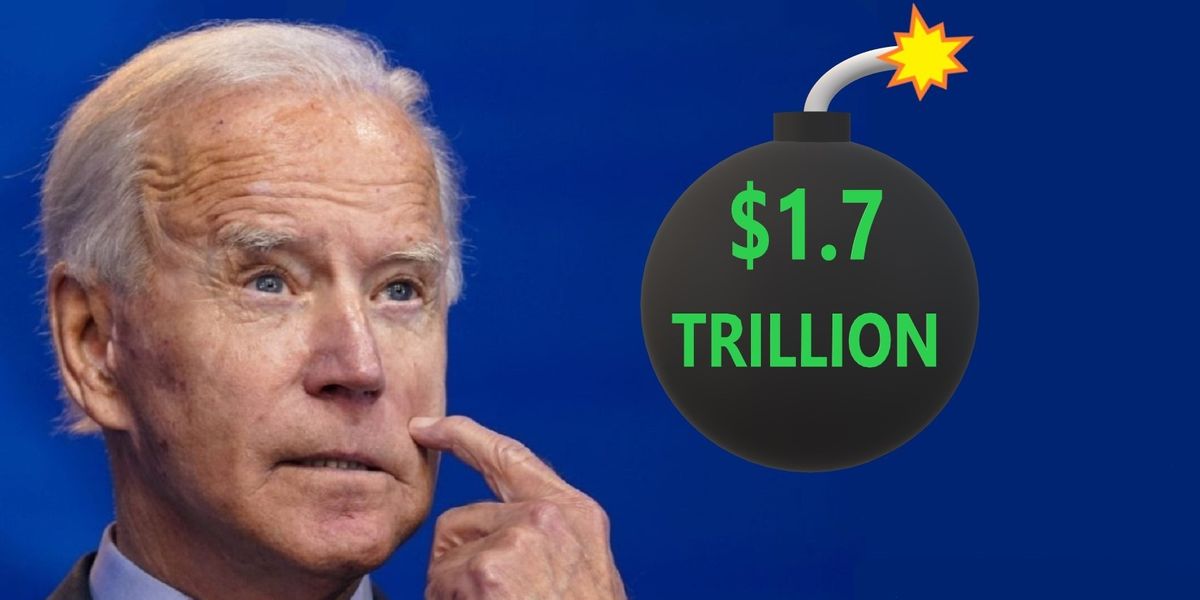
Last week, for the first time since the stock market began its precipitous fall in February, the Dow Jones Industrial Average stabilized above 29,000 points.
By Monday, November 16th, the Dow had surpassed all previous records, closing at 29,950. Meanwhile, the national death rate as a result of COVID-19 is as high as it’s been since May. Meanwhile, working Americans continue to struggle and suffer, wasting their gas money waiting in endless lines for limited supplies of free food.
If you, like nearly half of U.S. adults, don’t own any stock at all, the numbers above are essentially meaningless. Even for most of the people who are invested in the stock market, their investment isn’t substantial enough to make up for issues like widespread underemployment.
And yet, the Federal Reserve has poured $4 trillion into maintaining the stability of investment markets and ensuring that the Dow, the S&P 500 and various other numbers on charts that seem increasingly disconnected from reality move in the right direction. Why is that?
30 million people in this country are at risk of eviction.
Millions of people are unemployed or underemployed from… https://t.co/pWGQY94iJT— Alexandria Ocasio-Cortez (@Alexandria Ocasio-Cortez)1605753584.0
The answer to that question is complicated, but it is closely linked to the reason why President-Elect Joe Biden is currently on the receiving end of a lot of scrutiny and pushback on the topic of student loan forgiveness.
Recently the amount of student loan debt in the United States surpassed $1.7 trillion. That amount has more than tripled in the last 15 years, with around 45 million Americans currently holding some amount of student loan debt, and an average burden in excess of $30,000.
Most of that debt is nearly impossible to discharge through the standard bankruptcy process. And the fact that most of that burden falls on young people — whose careers are less established and who face generational declines in wages and wealth — exacerbates the impact of that debt. It’s a major factor in the worrying declines in rates of home ownership, marriage, and birth rate among millennials.
It is widely acknowledged that the cost of higher education has ballooned out of control while it has increasingly been pushed as a necessary step on the path to prosperity. Underlying this problem is the fact that — unlike many developed nations — our federal government doesn’t offer affordable public universities or fund education in fields like medicine and engineering where we always need more skilled professionals.
Why Is College So Expensive in America? | Making Cents | NowThis
www.youtube.com
Instead we offer government-backed loans and guarantees that incentivize institutions to invest in administrative bloat and in expensive development projects to enhance their prestige and entice prospective students with unnecessary luxuries. Teenagers instilled with little sense of the financial commitments — but an unwavering belief in the necessity of college — have become cash cows.
The system as it stands is clearly broken, and whatever other reforms are called for, the resulting debt crisis is interfering with the spending power and attainment of an entire generation. In the context of a pandemic that has affected the livelihoods of so many, it would seem like an uncontroversial act for the government to alleviate some of that burden of student debt.
And for the most part, it is. Opinion polling shows that the notion of providing some amount of student loan forgiveness is broadly popular across partisan lines.
The exception is among the pundit class — and the wealthy donors they represent. Because, as various political figures — including Democratic Senators Chuck Schumer and Elizabeth Warren — have begun urging Joe Biden to make student loan forgiveness an early focus of his presidency, others in politics and the news media have done their best to push back.
When you say #cancelstudentdebt, you’re saying a minority of people who had the advantage of obtaining a degree sho… https://t.co/BMbhxUHAbK— Dan Crenshaw (@Dan Crenshaw)1561467692.0
At the moment, a forbearance measure laid out in the CARES act has been extended through the remainder of 2020 — allowing those with federal student loans to defer payments for the time being. But further action being proposed would include forgiveness for debt owed to private companies.
Among the wide range of suggestions are legislation to provide $10,000 of debt forgiveness for individuals meeting certain restrictive criteria and $50,000 of automatic forgiveness for all student debt holders — delivered through an executive order as soon as Joe Biden assumes the White House.
In either case, some would still be left with large burdens of debt, and some would likely be hit with unmanageable tax bills — as debt forgiveness is considered a form of income. But the debate has not largely involved addressing those shortcomings. Rather, many have questioned whether we should be considering these proposals at all.
The objections tend to fall into three categories: It wouldn’t help the right people, it wouldn’t stimulate the economy as much as other measures, and “I paid off my student loans, so why shouldn’t they?”
The last is patently asinine, and should be ignored or mocked as it applies equally to any form of progress — “My face healed after smashing against the dashboard, so why should we add airbags now?” If the people espousing this perspective want to be acknowledged for their fiscal responsibility, here’s the entirety of the praise they deserve: Good for you.
The fact remains that many people are not able to pay off their student loan debts, which can have a ruinous effect on their credit rating, affecting everything from interest rates on other loans to — in a cruel twist — their employment prospects. There is a disturbing potential for an accelerating debt cycle that becomes impossible to escape.
“Things were bad for me, so they should stay bad for everyone else” is not a good argument against debt cancellatio… https://t.co/yyC60K5Uyz— Alexandria Ocasio-Cortez (@Alexandria Ocasio-Cortez)1605569343.0
Even for those who are able to pay off their debts may feel pressured by the monthly payments to accept employment that they otherwise wouldn’t — contributing to an imbalance in the employee-employer relationship that could further suppress wages. In short, it’s bad.
So while it’s valid to point out that there are others in the economy more in need than college graduates, we can’t ignore the reality of the student debt crisis. Along with other important measures — further extension and expansion of unemployment benefits, rent subsidies, and direct payments to make it easier for people to stay home — student loan forgiveness should be considered an essential part of COVID relief.
Which leaves only one complaint left: It wouldn’t do enough to stimulate the economy.
The basic issue is that the benefit of debt forgiveness is spread out over years or decades of remaining loan payments. And because it would also contribute to recipient’s tax burdens, there is a concern that much of the cost of debt relief would not result in short term increases in consumer spending — the kind that spurs quick economic growth.
While that’s worth being aware of, doesn’t this objection have its priorities reversed? Isn’t the entire purpose of a strong economy to improve people’s lives? So why are we unwilling to improve people’s lives unless it primarily contributes to short term economic growth?
Clearly our entire system has embraced this inverted way of thinking. That’s why it can pass almost without notice when the Federal Reserve spends $4 trillion to prop up investment markets.
We happily spend that amount on measures that only directly benefit the wealthy, and yet — when it’s suggested that we should spend a fraction of that on a popular policy that could improve the lives of 45 million Americans — it becomes a point of great contention.
We all seem to have forgotten the essential truth that the economy is meant to serve us — not the other way around.


 36
36